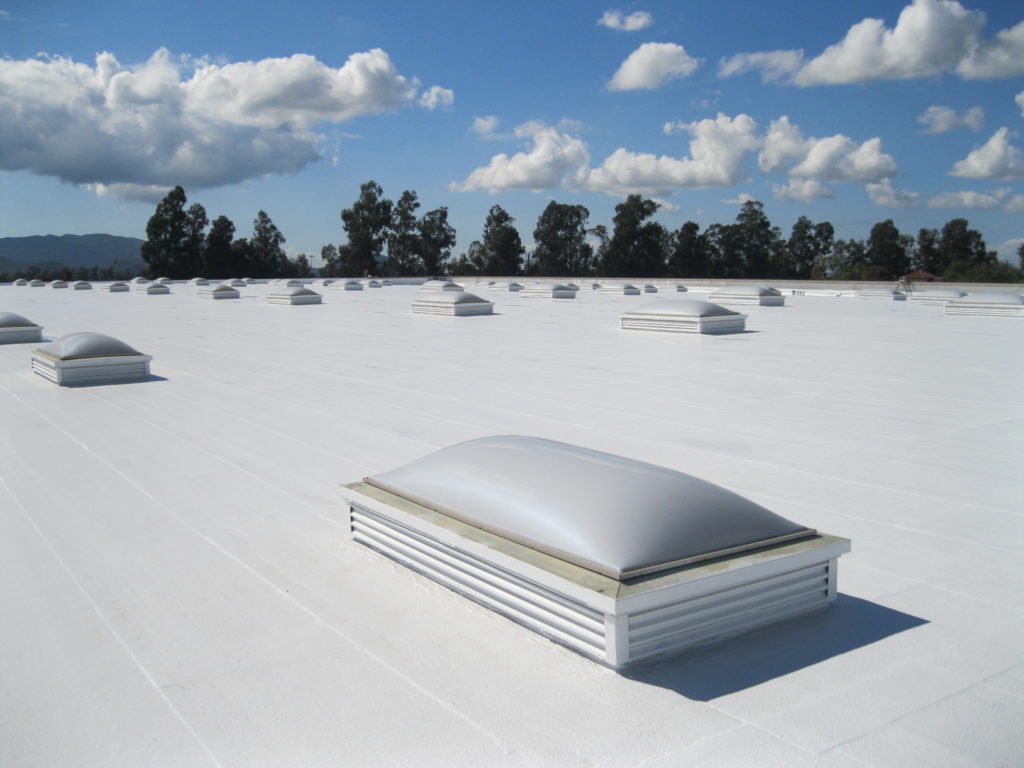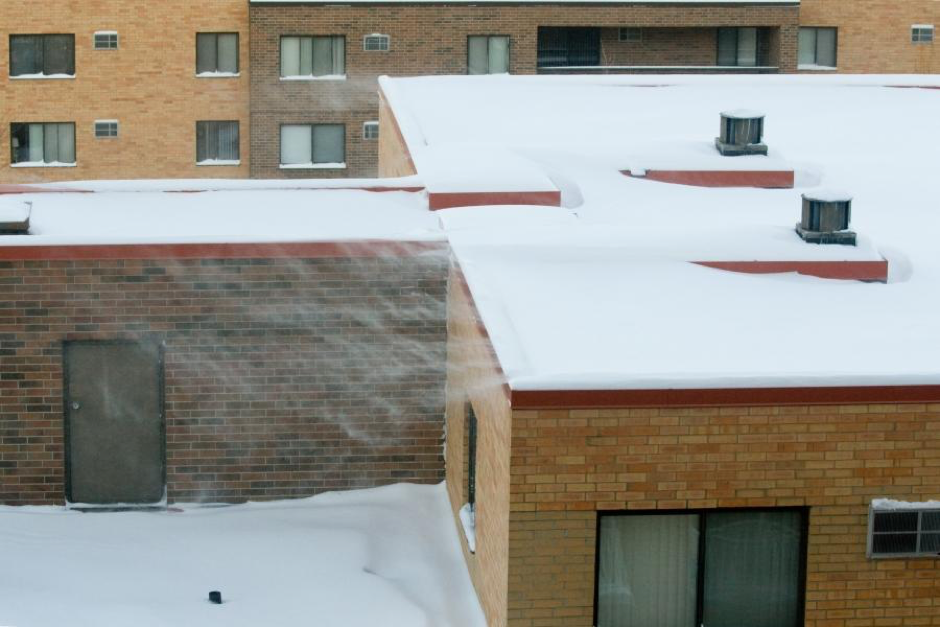TPO roof is a single-ply membrane roof whose popularity is rapidly growing thanks to its benefits. Most commercial building owners choose TPO roofs over other roofing materials because they are durable, efficient, and easy to install and maintain.
Manufacturers mix ethylene-propylene rubber with other materials like talc, carbon filler, or fiberglass to develop this durable and weather-resistant material. Besides, the roof has various installation methods, which we will look at later.
But before we look at the advantages, it is essential that we first know the features of TPO roofing material. This article also compares TPO with the other rubber roofs.
Let us get straight into it.
TPO Roofing Explained
TPO roofs are single-ply membrane roofs spread on a flat roof. The membrane has a reflective top that reflects UV rays to prevent heat gain and protect it from heat damage. The top part of the roof is also water-resistant, keeping the roof dry and free from water damage.
TPO roofs are standard in commercial buildings because of the high fire rating. The Thermoplastic polyolefin also provides energy efficiency to the building, so business owners will not pay a lot of energy.
The roof membrane is packed into rolls that have various thicknesses. You could buy a TPO roof that is 45mm or 90mm thick. However, thicker TPO membranes are more costly. Building owners also choose the type of insulation to install for their TPO roofs.

Types Of Insulations
One advantage of TPO roofs is the wider choice of insulation. Besides, the insulations have different prices with various features. The three main TPO roofing insulations are;
1. Polyisocyanate
Polyisocyanate, also known as polyiso, is made from synthetic chemicals and materials. Polyiso insulation is more expensive than the other two. It also has a higher R-value, meaning its insulation levels are higher than the rest.
2. Expanded Polystyrene
Also called EPS, polystyrene combines a foaming agent with a polymer. The mixture is heated and hardens after cooling, resulting in a firm insulation layer. Homeowners install EPS on the walls and floors to reduce heat exchange and maintain the room’s temperatures.
3. Extruded Polystyrene
The XPS is also made through the heating process, but manufacturers extrude it through a die to get a particular shape. Although XPS is high-performance insulation, it is semipermeable, meaning it is not waterproof. It costs less than the EPS and Polyiso.
The Advantages Of TPO Roofing
While comparing the features of different roofing materials, you should also look at its pros. These are the advantages you get from the roofing material, and most of them reduce the maintenance costs to make the material worth the price.
1. Affordable
TPO roofs cost less than some roofing materials like wood and slate shingles. Besides, these roofs need little to no maintenance. They are water-resistant, meaning they rarely suffer water patches that would require scheduling roof cleaning services.
Furthermore, the insulation materials are inexpensive, which increases energy efficiency. Despite the fact that TPO roofs have thick layers, insulation is still installed underneath.
2. Energy Efficiency
TPO’s UV reflection nature ensures less energy gain into the rooms. When the sun rays do not hit the roof directly, there is less heat exchange, keeping the heating and cooling system off.
A hardworking HVAC system uses a lot of energy leading to high energy bills. Since no heating or cooling is needed, the HVAC has less work to do, meaning business owners will pay less on energy.
3. Easy Installation
TPO roofs are lightweight, and they have wider sheets with few seams. It makes the roof easy to install. However, building owners should refrain from trying DIYs because they don’t have the necessary skills to install the roofs.
Besides, since the roofs are lightweight, they don’t require many people to do the work, and you will pay less for installation. If you just bought a TPO roof and want perfect installation, visit this page to connect with the best installers.
4. Low Maintenance
Rubber roofs don’t require repainting or cleaning, and they are resistant to harsh weather. However, if your TPO roof wears or tears after a storm or heavy rains, you can DIY on the repairs.
Building owners use liquid rubber or heavy-duty adhesive tape to fix the tape. However, most of them are reluctant to repair their roofs immediately, leading to other moisture damages like swelling and wood rot.
5. Durability
A roof’s durability is an essential factor to the homeowner. Durable roofs can withstand harsh climatic conditions like strong winds, hailstorms, and the scorching sun. Besides, the high durability increases the roof’s longevity.
6. Fire Resistance
Commercial buildings are mainly required to have high fire resistance roofs because they are more prone to fires. TPO roofing materials are suitable for these building owners because they obey the building rules. Besides, insurers give discounts to homeowners with TPO roofs.

Cons Of TPO Roofing
While looking at the advantages of a TPO roof, ensure you also research the disadvantages to know what to expect. Some of them are;
1. Aesthetics
Although a roof’s beauty is not as important as other factors like durability and energy efficiency, it improves the home’s value. This is different with TPO roofs because they come in a single-colored sheet, usually black or white.
2. Installation
TPO roof installation is easy because of the straightforward installation methods and material lightness, but they require professionals. Since the roof is new in the market, some installation professionals discourage most building owners from buying it.
3. Inconsistency In Material Quality
Many manufacturers are trying to mix other materials to see which combination makes a better TPO roof. This causes some retailers to have high-quality TPO membranes while you will get a lower quality roof at the same price from another retailer.
Final Words
TPO has more advantages and favorable features than the other rubber roofing materials and other roofs in general. However, always look at the cons before buying any roofing material. Also, ensure that you hire a qualified roofer to install it because the quality of a roof installation service will also influence the roof’s longevity.






